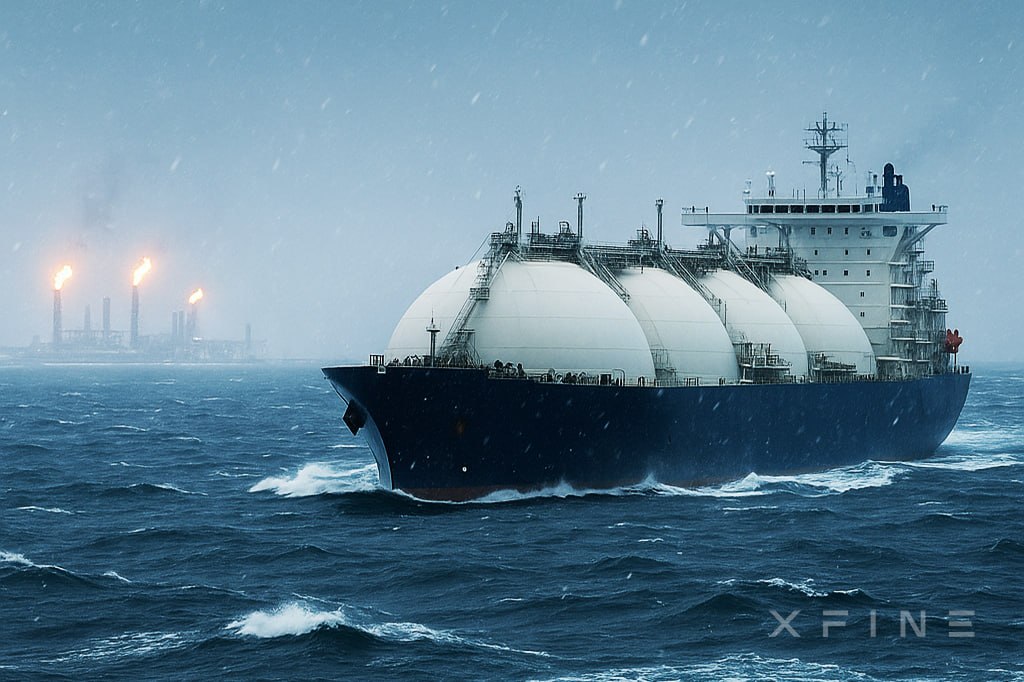
Europe entered autumn 2025 with significantly lower gas reserves than a year earlier. According to the German Association of Gas Storage System Operators (INES), by mid-September Germany’s gas storage facilities were only 75% full compared with more than 95% in 2024. Under normal winter conditions, these reserves should be sufficient, but in the event of prolonged cold spells, stocks could deplete quickly. At the same time, TTF (Title Transfer Facility – the virtual hub for gas trading) prices in August–September hovered around €32–34 per megawatt hour, below last year’s peaks but still higher than “pre-crisis” levels. Analysts at XFINE note that the market now depends less on reserves and more on weather conditions and demand discipline: with a mild winter, Europe can get through the season without major shocks, but with a cold one, the risk of price spikes remains.
The electricity market looks calmer. In August, average wholesale prices in most European countries fell below €75 per megawatt hour thanks to weak demand and a strong contribution from renewable generation. The International Energy Agency (IEA) forecasts electricity demand in the EU to grow by only 1.1% in 2025 after two years of industrial decline. As XFINE emphasises, the stability of prices this winter will primarily depend on weather conditions and the reliable performance of nuclear and wind generation.
Western Europe. Here the risks remain localised. The EU reached the minimum gas injection target into underground storage back in August, but the overall level is lower than last year, while reliance on liquefied natural gas (LNG) imports remains high. In the United Kingdom, from 1 October a new Ofgem price cap of £1,755 per year for an average household comes into force, implying an increase in bills of about 2%. According to Bloomberg, this will add only a modest impulse to inflation, far from the shocks of 2022. Experts believe that for the eurozone the main risk lies in a combination of cold weather and LNG supply disruptions; in the baseline scenario, however, the inflationary impact of energy this winter remains limited.
CIS countries. In Russia, IEA data show that gas consumption in the first half of 2025 fell by 2% due to a mild winter and weak industrial dynamics. This eases pressure on the domestic market and allows prices to remain within moderate limits. For Central Asian countries, LNG prices and hydrological conditions are key: with normal levels of precipitation, no acute electricity shortages are expected, although power systems will have to adjust to the seasonality of renewables. XFINE analysts underline that for Central Asia, the main challenge remains the availability of imported fuel and the stability of transit routes.
Ukraine. Here the risks are highest. According to Ukraine’s Ministry of Energy, by mid-September underground storage facilities contained around 11-12 billion cubic metres of gas, about 2 billion short of the winter target. To cover the shortfall, additional imports worth roughly $1 billion will be needed. Reuters recalls that Ukraine’s fourth wartime winter is complicated by continued strikes on energy infrastructure, including power plants and railway junctions. This increases the likelihood of supply disruptions and tariff spikes.
The rest of the world. According to the IEA, global gas demand in 2025 is slowing to 1.3% after 2.8% growth in 2024. The reasons are macroeconomic uncertainty and still-high prices, especially for Asian countries. This reduces competition for LNG cargoes between Europe and major importers such as China and India, indirectly supporting the European market in winter 2025/26. However, as the Financial Times points out, the global energy system remains vulnerable to “black swan” events – from extreme weather to possible escalation in the Strait of Hormuz.
Conclusion. The likelihood of a systemic energy crisis in winter 2025/26 is much lower than two years ago. Gas in Europe is cheaper than last winter, storage levels are sufficient for normal weather conditions, and electricity prices have stabilised. However, risks remain: a cold winter, LNG supply disruptions and infrastructure attacks, especially in Ukraine. For Europe and CIS countries, inflationary pressure from energy resources appears moderate and cyclical. For Ukraine, it remains high and directly linked to the war. According to XFINE analysts, the key tool for managing risks will be flexible procurement and the ability to respond quickly to potential disruptions in order to avoid paying the “weather premium” to the fullest extent.